1. Orazi A, Albitar M, Heerema NA, Haskins S, Neiman RS. Hypoplastic myelodysplastic syndromes can be distinguished from acquired aplastic anemia by CD34 and PCNA immunostaining of bone marrow biopsy specimens. Am J Clin Pathol. 1997; 107:268–274. PMID:
9052376.

2. Orazi A, Czader MB. Myelodysplastic syndromes. Am J Clin Pathol. 2009; 132:290–305. PMID:
19605823.

3. Tuzuner N, Cox C, Rowe JM, Watrous D, Bennett JM. Hypocellular myelodysplastic syndromes (MDS): new proposals. Br J Haematol. 1995; 91:612–617. PMID:
8555063.

4. Baur AS, Meugé-Moraw C, Schmidt PM, Parlier V, Jotterand M, Delacrétaz F. CD34/QBEND10 immunostaining in bone marrow biopsies: an additional parameter for the diagnosis and classification of myelodysplastic syndromes. Eur J Haematol. 2000; 64:71–79. PMID:
10997326.
5. Elghetany MT, Vyas S, Yuoh G. Significance of p53 overexpression in bone marrow biopsies from patients with bone marrow failure: aplastic anemia, hypocellular refractory anemia, and hypercellular refractory anemia. Ann Hematol. 1998; 77:261–264. PMID:
9875662.

6. Totzke G, Brüning T, Vetter H, Schulze-Osthoff K, Ko Y. P53 downregulation in myelodysplastic syndrome - a quantitative analysis by competitive RT-PCR. Leukemia. 2001; 15:1663–1664. PMID:
11587227.

7. Lepelley P, Preudhomme C, Vanrumbeke M, Quesnel B, Cosson A, Fenaux P. Detection of p53 mutations in hematological malignancies: comparison between immunocytochemistry and DNA analysis. Leukemia. 1994; 8:1342–1349. PMID:
8057671.
8. Brunning RD, Orazi A, Germing U, Le Beau MM, Porwit A, Baumann I, et al. Myelodysplastic syndromes/neoplasms, overview. In : Swerdlow SH, Campo E, editors. WHO classification of tumours of haematopoietic and lymphoid tissues. 4th ed. Lyon: IARC;2008. p. 88–93.
9. Greenberg PL, Tuechler H, Schanz J, Sanz G, Garcia-Manero G, Solé F, et al. Revised international prognostic scoring system for myelodysplastic syndromes. Blood. 2012; 120:2454–2465. PMID:
22740453.

10. Bain BJ, Clark DM, Wilkins BS. Acute myeloid leukemia, mixed phenotype acute leukemia, the myelodysplastic syndromes and histiocytic neoplasms. In : Bain BJ, Clark DM, editors. Bone marrow pathology. 4th ed. Oxford: Wiley-Blackwell;2010. p. 166–238.
11. Bain BJ. The myelodysplastic syndromes. In : Bain BJ, editor. Leukaemia diagnosis. 4th ed. Oxford: Wiley-Blackwell;2010. p. 219–260.
12. Brodsky RA. Acquired aplastic anemia. In : Greer JP, Foerster J, editors. Wintrobe's clinical hematology. 12th ed. Philadelphia: Lippincott Williams & Wilkins;2009. p. 1185–1195.
13. Matsui WH, Brodsky RA, Smith BD, Borowitz MJ, Jones RJ. Quantitative analysis of bone marrow CD34 cells in aplastic anemia and hypoplastic myelodysplastic syndromes. Leukemia. 2006; 20:458–462. PMID:
16437138.

14. Choi JW, Fujino M, Ito M. F-blast is a useful marker for differentiating hypocellular refractory anemia from aplastic anemia. Int J Hematol. 2002; 75:257–260. PMID:
11999352.

15. Elghetany MT. p53 overexpression in bone marrow biopsies in refractory anemia and aplastic anemia: impact of antibody selection. Leuk Res. 2000; 24:975–977. PMID:
11086182.

16. Horny HP, Sotlar K, Valent P. Diagnostic value of histology and immunohistochemistry in myelodysplastic syndromes. Leuk Res. 2007; 31:1609–1616. PMID:
17604834.

17. De Raeve H, Van Marck E, Van Camp B, Vanderkerken K. Angiogenesis and the role of bone marrow endothelial cells in haematological malignancies. Histol Histopathol. 2004; 19:935–950. PMID:
15168356.
18. Gupta P, Khurana N, Singh T, Gupta D, Dhingra KK. Bone marrow angiogenesis in aplastic anemia - a study of CD 34 and VEGF expression in bone marrow biopsies. Hematology. 2009; 14:16–21. PMID:
19154660.

19. Soligo DA, Oriani A, Annaloro C, Cortelezzi A, Calori R, Pozzoli E, et al. CD34 immunohistochemistry of bone marrow biopsies: prognostic significance in primary myelodysplastic syndromes. Am J Hematol. 1994; 46:9–17. PMID:
7514357.

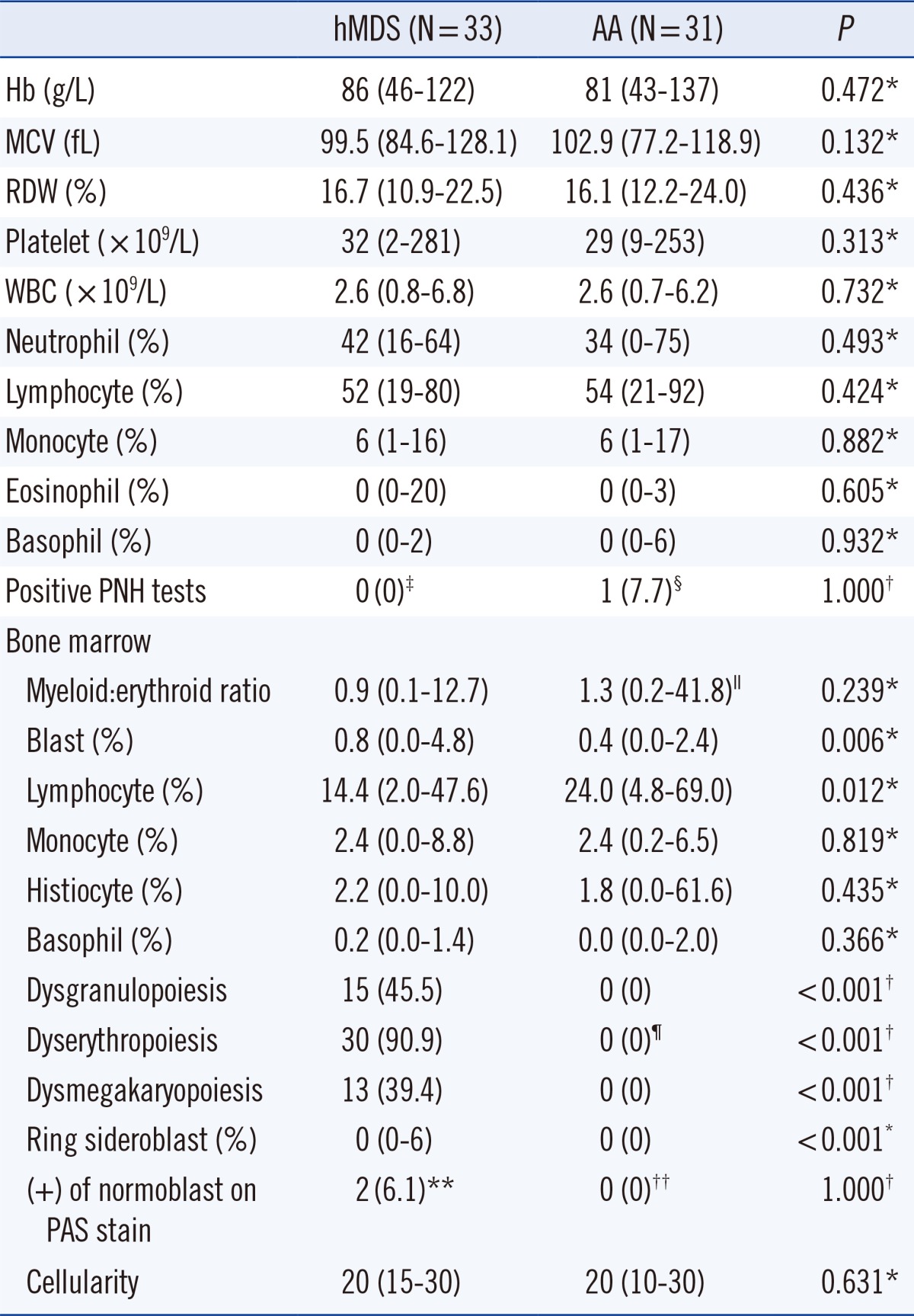





 PDF
PDF ePub
ePub Citation
Citation Print
Print


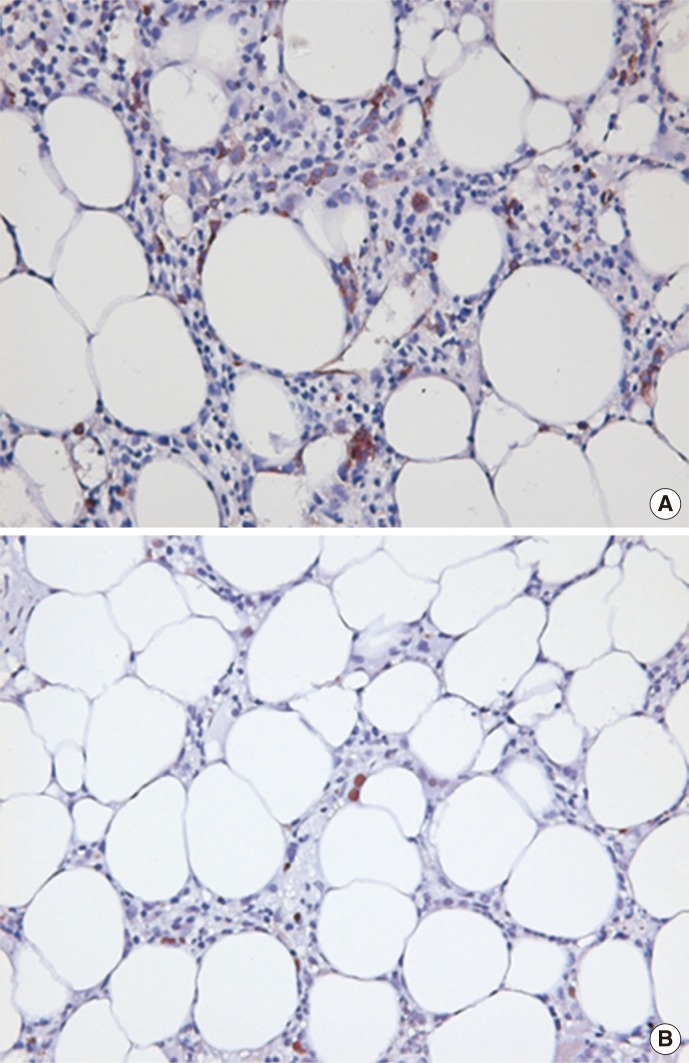
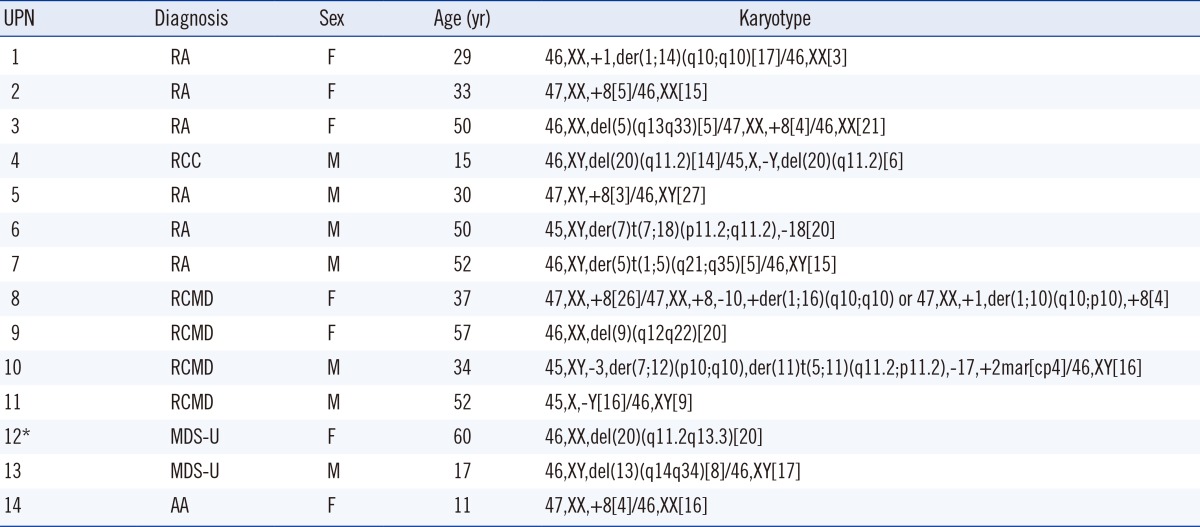
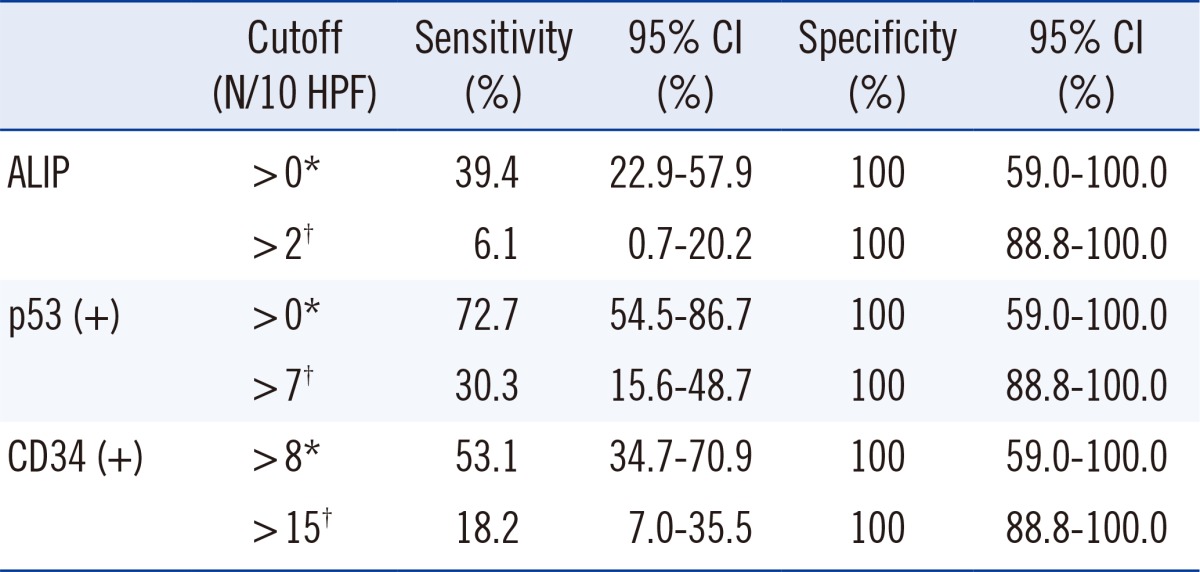

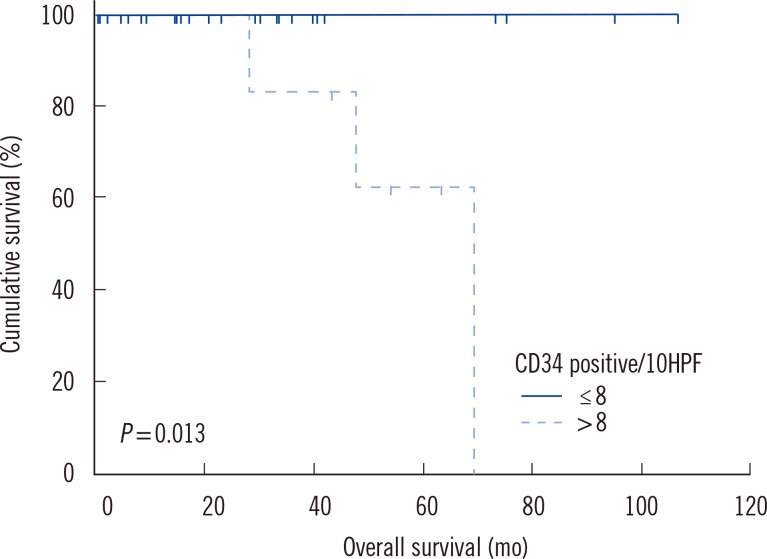
 XML Download
XML Download